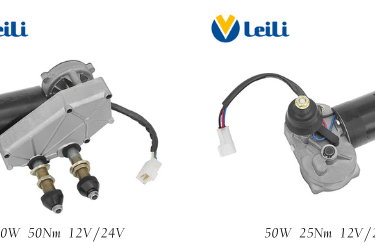Automobile Wiper Motor Analysis: Faults & Prices
Discover comprehensive insights into automobile wiper motor analysis, covering working principles, common faults, repair vs. replacement, and cost evaluation for optimal car maintenance.
LEILI
Hower Yang
7/6/20255 min read


The working principle common fault and price analysis of automobile wiper motor
The automobile wiper motor is a vital component in every vehicle. It ensures clear visibility by powering the windshield wipers. Understanding its function is crucial for car owners and enthusiasts.
This guide delves into the working principle of wiper motors. We will explore common faults and provide a price analysis. Knowing these aspects can help in making informed decisions about repair and replacement.
Wiper motor issues can affect driving safety. Recognizing symptoms early can prevent costly repairs. Regular maintenance is key to extending the motor's lifespan.
Whether you're a mechanic or a car owner, this article offers valuable insights. Learn how to keep your wiper motor in top condition.
Understanding the Working Principle of Automobile Wiper Motors
The automobile wiper motor is a crucial part of the vehicle's windshield wiper system. It converts electrical energy from the car's battery into mechanical motion, enabling the wiper blades to sweep across the windshield. This is essential for keeping the glass clear of rain, snow, and debris.
A typical wiper motor comprises several key components that work together seamlessly. Some of these include:
An electric motor
A worm gear
A linkage assembly
These components ensure the wiper arms move in a synchronized manner. The electric motor drives the worm gear, which in turn moves the linkage. This mechanical motion allows the wiper blades to travel across the windshield in a back-and-forth motion.
The operation of the wiper motor is controlled via a switch inside the vehicle. Drivers can adjust the speed and frequency of the wipers according to the weather conditions. The electrical circuit design includes relays and fuses for safety and control.
Understanding how a wiper motor works helps in diagnosing issues effectively. Awareness of its components and function is essential for identifying potential faults and ensuring optimal performance. With this knowledge, car owners and mechanics can perform timely interventions to prevent serious problems.
Common Faults in Windshield Wiper Motors
Windshield wiper motors are prone to certain common issues over time due to wear and tear. Identifying these faults early can prevent further damage. One frequent problem is motor failure, which can halt the movement of the wiper blades entirely.
Electrical issues are another common culprit. These issues often result from problems such as a blown fuse or damaged wiring. Such faults may cause erratic wiper movement or prevent the wipers from operating altogether.
Mechanical wear and tear also take a toll on wiper motors. Components like gears and linkages can wear out, leading to reduced efficiency. If the linkage becomes loose, the wipers may not maintain proper contact with the windshield.
Signs of a malfunctioning wiper motor include:
Slow or non-moving wiper blades
Unusual noises during operation
Random stopping of the wiper blades
Regular exposure to harsh weather can accelerate these issues. Factors like snow, ice, and even prolonged sun exposure can weaken the motor and associated parts. The operation of wipers over a dry windshield can also increase strain on the motor.
Addressing these faults quickly is key to maintaining a reliable wiper system. Regular inspections can help detect issues early before they lead to complete motor failure. With timely repairs and replacements, you can ensure safety and visibility during adverse weather conditions.
Diagnosing Wiper Motor Problems: Symptoms and Troubleshooting
Diagnosing wiper motor problems begins with recognizing the symptoms. The first sign usually includes wipers that move slower than usual or stop midway. This could indicate a problem with the motor's electrical supply.
Noises, like grinding or excessive clicking, often suggest internal wear. Gears or bearings might be wearing out, calling for further inspection. Inconsistent wiper movement is another symptom, which may stem from loose components or electrical faults.
To troubleshoot, start by checking the fuse and wiring for damage. A blown fuse or a broken wire can easily halt wiper function. Ensuring all connections are tight and free from corrosion is crucial.
Next, consider manually moving the wipers to check for mechanical resistance. A stiff or stuck mechanism could point to debris blockage or linkage issues. Regular maintenance can often resolve such mechanical problems.
Here's a list for quick symptom checks and troubleshooting actions:
Check fuse and wiring if wipers stop.
Listen for unusual noises during operation.
Examine wipers for slow or erratic movement.
Inspect for physical obstructions or linkage wear.
Addressing these issues efficiently can prolong motor life and ensure clear visibility, crucial for safe driving.
Wiper Motor Repair vs. Replacement: What to Consider
Deciding between wiper motor repair and replacement requires careful consideration of multiple factors. First, assess the extent of the damage. Minor issues like cleaning or lubricating parts can suffice for simple faults.
Cost is another crucial factor. Often, replacing a few components is cheaper than a full motor replacement. However, extensive damage might make replacement more economical in the long run.
Skill level and tools available should also influence your decision. DIY repair might be feasible for simple fixes if you possess the necessary skills. Otherwise, professional services may be more reliable for complex cases.
Here are some key points to consider:
Evaluate the extent of damage.
Compare repair costs to replacement costs.
Consider your skill level for DIY vs. professional help.
Weighing these factors helps make an informed decision that ensures the best outcome for your vehicle's maintenance.
Price Analysis: Cost of Wiper Motor Repair and Replacement
Understanding the price dynamics of wiper motor repair and replacement is crucial for budgeting. The total cost primarily depends on the vehicle's make and model. Luxury cars often incur higher costs due to specialized parts.
Labor costs are another significant consideration. Professional repair rates can vary widely. Depending on the region and service provider, expect different pricing structures.
When comparing repair and replacement costs, remember that new motors may have warranties. This added security can justify a higher upfront cost. In contrast, repair might be less expensive initially but may lack long-term guarantees.
Here are key factors influencing costs:
Vehicle make and model.
Labor rates and service provider fees.
Warranty offerings on new parts.
Knowledge of these elements helps manage expenses effectively. It ensures your vehicle’s wiper system functions smoothly without unexpected financial burdens.
Maintenance Tips to Extend Wiper Motor Lifespan
Proactive maintenance can significantly boost the longevity of your wiper motor. Regular check-ups identify issues before they become severe, saving on extensive repairs. Simple steps can ensure smooth operation.
Inspect the wiper system for debris or damage. Keep connections tight and clean. Avoid using wipers on dry glass, as it strains the motor and blades.
Here are some effective maintenance tips:
Regularly clean wiper blades and motor connections.
Inspect and replace worn or damaged blades promptly.
Keep the windshield free from dirt and debris.
Use your wipers only with adequate washer fluid.
These practices reduce wear and ensure efficient, reliable performance of your vehicle's wiper system. Maintaining your wiper motor extends its useful life, enhancing driving safety and visibility.
Conclusion: Ensuring Safe and Reliable Wiper Motor Performance
A well-functioning wiper motor is crucial for driving safety. Addressing faults quickly preserves motor health and ensures clear visibility during adverse weather.
Regular maintenance and timely repairs prevent unexpected failures. This keeps your wiper motor reliable. Always prioritize inspections and replacements when necessary to maintain top performance. Investing in care now saves significant costs and effort later.
